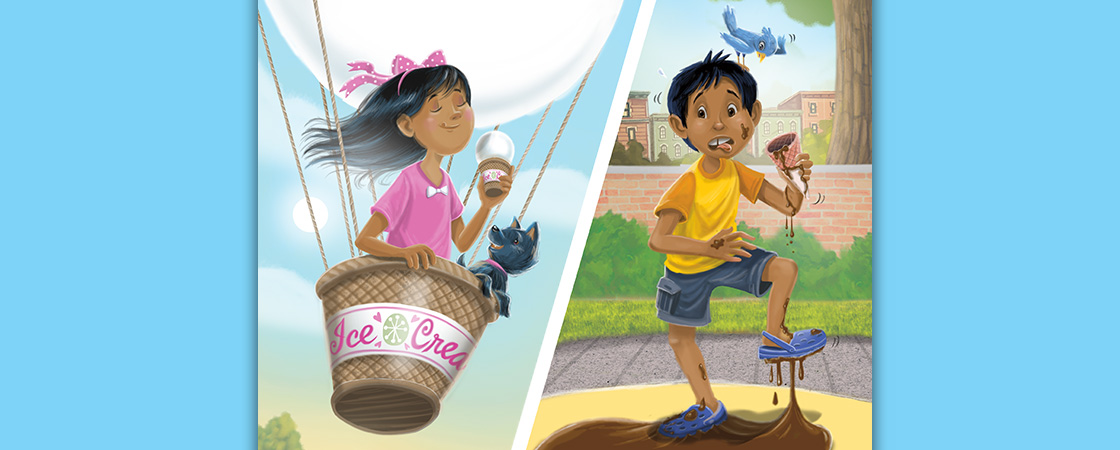My ice cream is a big balloon.
It carries me away
through clouds of creamy coolness on
this scorching summer day.
It’s frosty and refreshing.
It floats me to the moon.
To beat the heat, I love this treat . . .
my ice cream cone balloon.

Two poems about ice cream
Learning Objective: Students will compare and contrast two poems about ice cream, each of which uses a metaphor to describe the experience of eating ice cream.
Ice Cream Float
My ice cream is a big balloon.
It carries me away
through clouds of creamy coolness on
this scorching summer day.
It’s frosty and refreshing.
It floats me to the moon.
To beat the heat, I love this treat . . .
my ice cream cone balloon.
Ice Cream Flowed
My ice cream is a ball of mud,
a scoop of icky, sticky crud.
The sludge is dripping down my hand,
my arm, my pants, my feet, the sand.
I can’t quite lick it fast enough
to stop this flood of mucky stuff.
I scream! Instead of cold and round,
it’s now a puddle on the ground.
Reprinted by permission of THE POET. All Rights Reserved.
Table of Contents
5. Differentiate and Customize
Struggling Readers, Multilingual Learners, Advanced Readers, Creative Writing
1. Preparing to Read
Set a Purpose for Reading
Preview Text Features and Vocabulary
2. Reading and Discussing the Poem
Close-Reading Questions
3. Skill Building
Featured Skill: Figurative Language
Distribute or digitally assign our Figurative Language Skill Builder and have students complete it in class or for homework.